Jan 31
2014
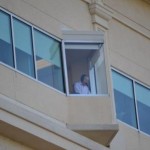
In Part 1 of our interview with Larry, we discussed his preparation for races, how he got interested in the job of track announcer, and how calling races for television differs from the job of being a track announcer. Click here to read Part 1 on Larry Collmus.
In Part 2, we discuss some of the particular things he looks for when calling a race, his favorite horses, his hiring by NBC Sports, and one of his all-time favorite race calls by someone other than himself. Read More >>
Jan 27
2014
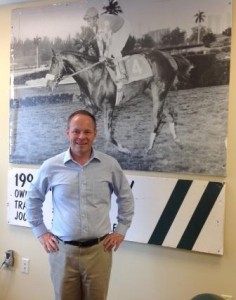
On Thursday, January 9th, I had a chance to spend several races in the announcing booth with Larry Collmus, the track announcer at Gulfstream Park. In addition to announcing at Gulfstream Park, he is also the track announcer for Monmouth Park in New Jersey and the voice of the Triple Crown and Breeders’ Cup races for NBC Sports. Update: Larry is now the track announcer for Churchill Downs. He will no longer be at Monmouth Park.
Larry was very comfortable with having me in the booth with him, and that allowed me to fire away with questions, while taking periodic breaks for his race-to-race preparations and actual race calls. Here is a replay of our conversation.
Read More >>
Oct 20
2013
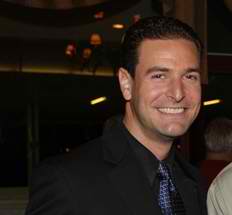
John Lies
In Part 2 of our interview with John Lies, he discusses more about his announcing style and delves into his background in the racing business and how it helped to give him a “leg up” on his present career. He also discusses the importance of utilizing social media in the horse racing industry. Click here to read Part 1 of our interview with John.
I believe I read once that Trevor Denman doesn’t call the fractional times during a race call. Are you the same way?
Yes, I’m the same way. At Kentucky Downs you don’t have that option, as we don’t have the fractional times. But, that’s ok, as I’m already accustomed to doing it that way, whether at Lone Star or any track for that matter. I will often say things like the lead horse made an easy lead, they’re going slow, all the jockeys are taking a hold. Or, you’ve got three horses all putting pressure on each other, all on the lead, and the field is spread out 15 lengths.
Read More >>
Oct 17
2013
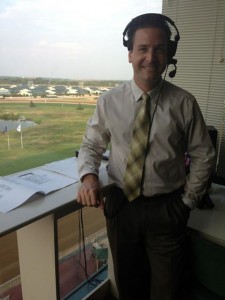
John Lies
In a previous article we introduced you to the very unique experience of Kentucky Downs racetrack in Franklin, Kentucky. Click here to read that article.
One of the details not included in that article was the pleasure of hearing the track announcer John Lies (pronounced Lees) perform a different style of announcing (or commentating as he likes to call it). With a manner that is both comforting and informative to the listener, John impressed me enough to make a mental note to get to know him better at some future point. With the help of C.J. Johnsen, I made contact with John and render the following interview.
It seems like you have a genuine interest in educating people. Is that your own style and is it unique to Kentucky Downs?
I do aim to do that. And that is something that is more my style than being specific to any racetrack. I take my act to whatever venue we’re at. I do some things similar at Lone Star Park [John is the full-time track announcer at Lone Star], but not identical. At Lone Star we have a paddock presenter, Dave Appleton … just like you heard Gary West doing at Kentucky Downs. I do a pre-race handicapping seminar here at Lone Star that does go out on the simulcast, but then nothing in between the races. [At Kentucky Downs John makes comments in between races about the upcoming race and interacts with Gary in a conversation style.]
Read More >>
Sep 24
2013
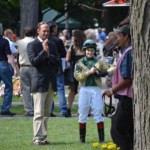
Tom Morley and Rosie Napravnik
In this third installment of our interview with Tom Morley, he describes his approach to preparing horses to run on different surfaces and distances. He also discusses in greater detail his involvement in Claiming horses. Click here to read the second part of our interview with Tom., him dealing with the challenges and emotions of the sport.
When preparing a horse for turf (rather than dirt), do you have a different regimen of preparation?
I try to get turf horses to relax early. They’re going to have to work on the dirt anyway, but I like to see them pick it up towards the end of a work. The dirt horses I like to see more of an even pace from pole to pole. Apart from that they train very much the same way. You try and tailor your training a little bit over what sort of distances they’re going to run. But an awful lot of it in America is trying to keep the horse sound and happy. It’s very easy to make a horse sore out here. Dirt is very tough surface on horses to train on day in and day out. At home (England), horses work twice a week, you know a fast work twice a week. But everyone here works them once a week, and that’s enough. They can take more at home than they can here. Read More >>
Sep 3
2013
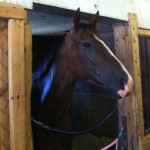
Treblemaker (Tom’s First Winner)
In a prior article we introduced you to a young trainer on the New York circuit. Click here for a review of the first article on Tom Morley. In this article we’re going to get into the challenges facing a new trainer in a very competitive sport. And, discuss some of the emotions involved in participating in a sport that is very much like being on a roller coaster ride … every day.
The horse on the left, Treblemaker, was his first winner, on April 13, 2013 at Aqueduct in only his second start as a head trainer. He won his first race at Saratoga on August 2nd, 2013 with Scribbling Sarah. But more about that in the interview.
Read More >>
Aug 25
2013
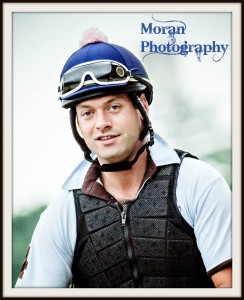
In an ongoing effort to bring to you, the fans, examples of real people working in the horse racing industry we bring you Tom Morley, horse trainer. Tom was mentioned in a prior post about Maggie Wolfendale, who works as the Paddock Analyst for NYRA.
In addition to her job at NYRA, Maggie is very involved in Tom’s business, working with the horses on a daily basis. They are involved in a personal relationship as well. (Update July 26, 2014: Tom Morley is now Maggie Wolfendale’s fiancee!)
Tom is a young trainer, who launched his own business in 2013. He had prior experience working for Eddie Kenneally as an assistant trainer. All of that we’ll get into, and more. He was very generous with his time, so we have a lot of material to write about Tom. So much, that we’re going to break apart the interview into multiple parts. This part will introduce you to Tom and set the stage for some very interesting insight into the life of a young trainer.
Read More >>
Jun 18
2013
In a prior post we described the physical requirements of a jockey, and argued that (pound-for-pound) they might be the best athlete in all of sports. We also explained how their life can change in an instant. On January 18, 2013 that is exactly what happened to Ramon Dominguez. At 36 years old and at the pinnacle of his sport (having won the Eclipse award for best jockey in the nation for the 3rd consecutive year) he crashed to the ground in a spill at Aqueduct race track. His injury would later be described as a “traumatic brain injury.” Read More >>
May 8
2013
In his book, Ainslie’s Complete Guide to Thoroughbred Racing, Tom Anslie said:
The truth is that racing is no more natural for horses than the hundred-yard dash is for men. To engage successfully in activities of that kind, a horse (or man) must be schooled and tended. To survive any great number of races or training workouts without breaking down, the muscles, joints, heart and lungs of horse or man must be trained for undue stress.
Read More >>
Apr 8
2013
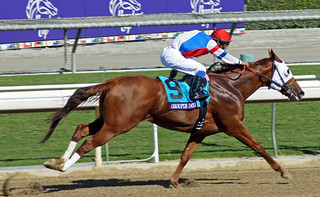
Photo by Alicia Hamm
Pound-for-pound, arguably the best athlete in all of sports. He has to balance his weight on his toes, that are pressed tightly into a thin metal stirrup, while guiding an animal weighing more than 1,000 pounds around a race track, at nearly 40 miles per hour.
During the course of a race, only the insides of his feet and ankles are in constant contact with the horse. He is effectively floating in midair, while holding a rein that acts as his steering wheel. But, unlike a steering wheel, it’s not attached to a chassis.
If the horse stumbles, or the jockey starts to lose his balance, there is nothing firm for the jockey to hold onto. A racehorse’s neck tends to be slippery, and in perpetual motion. And if he falls, his life can change in an instant.
Read More >>








